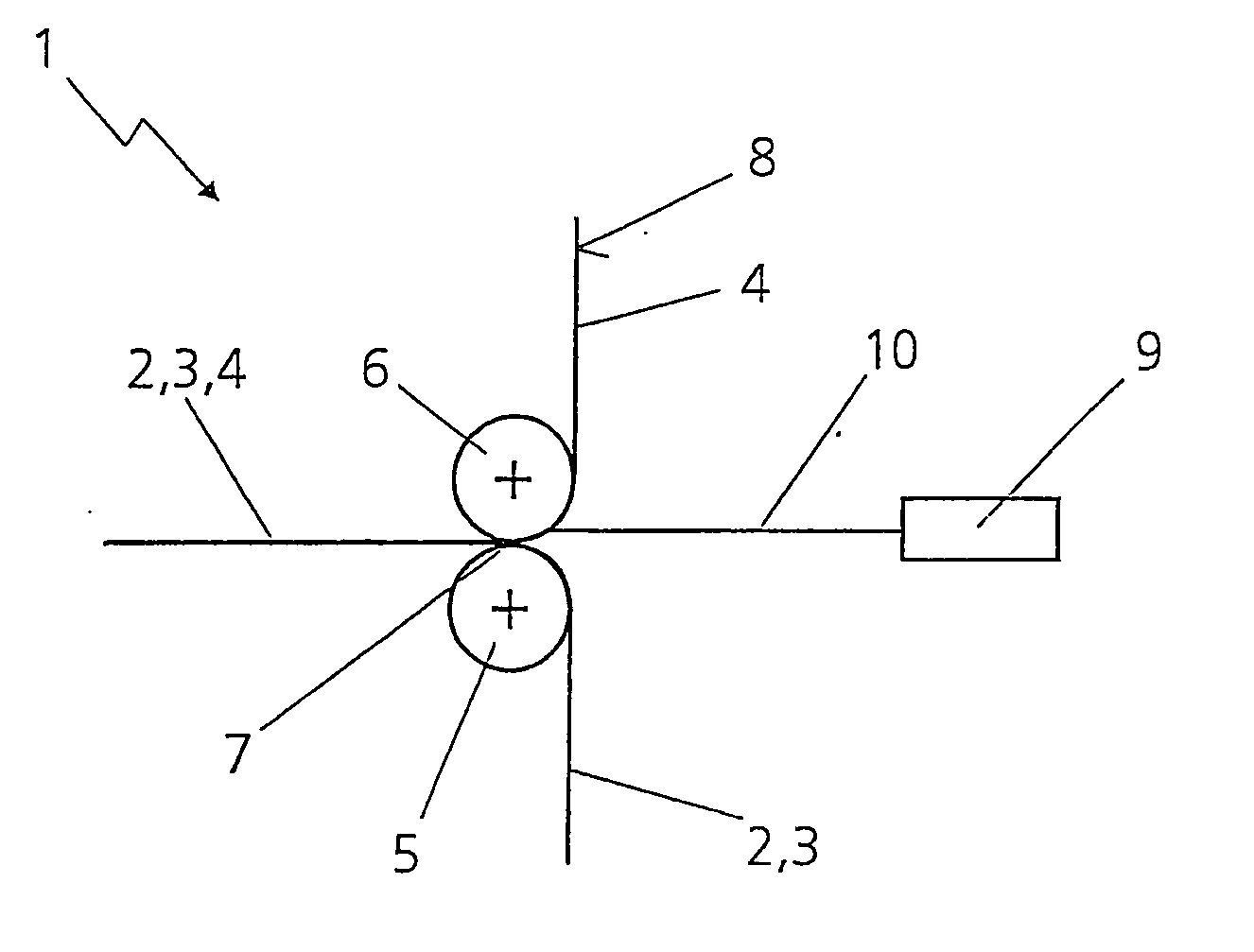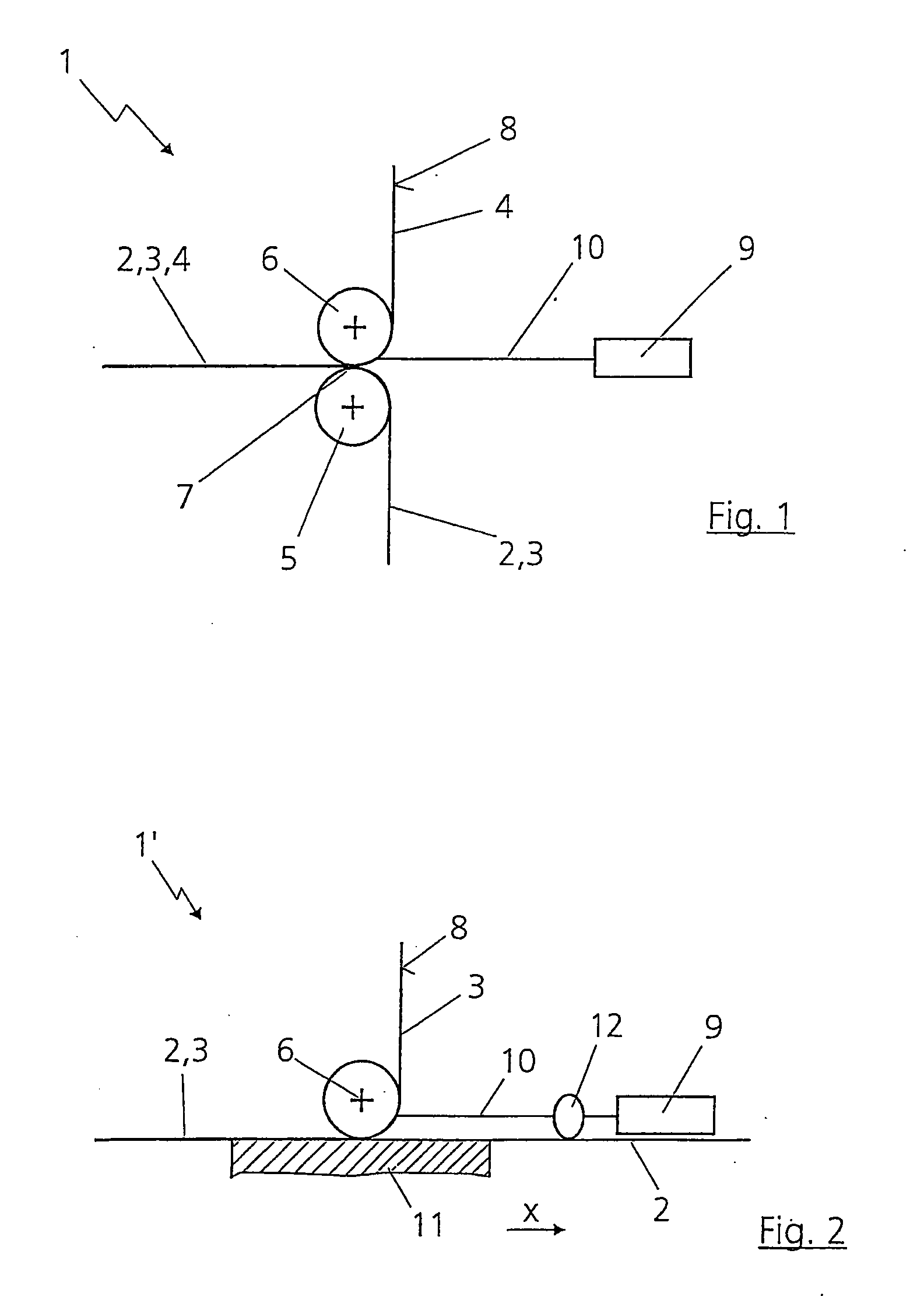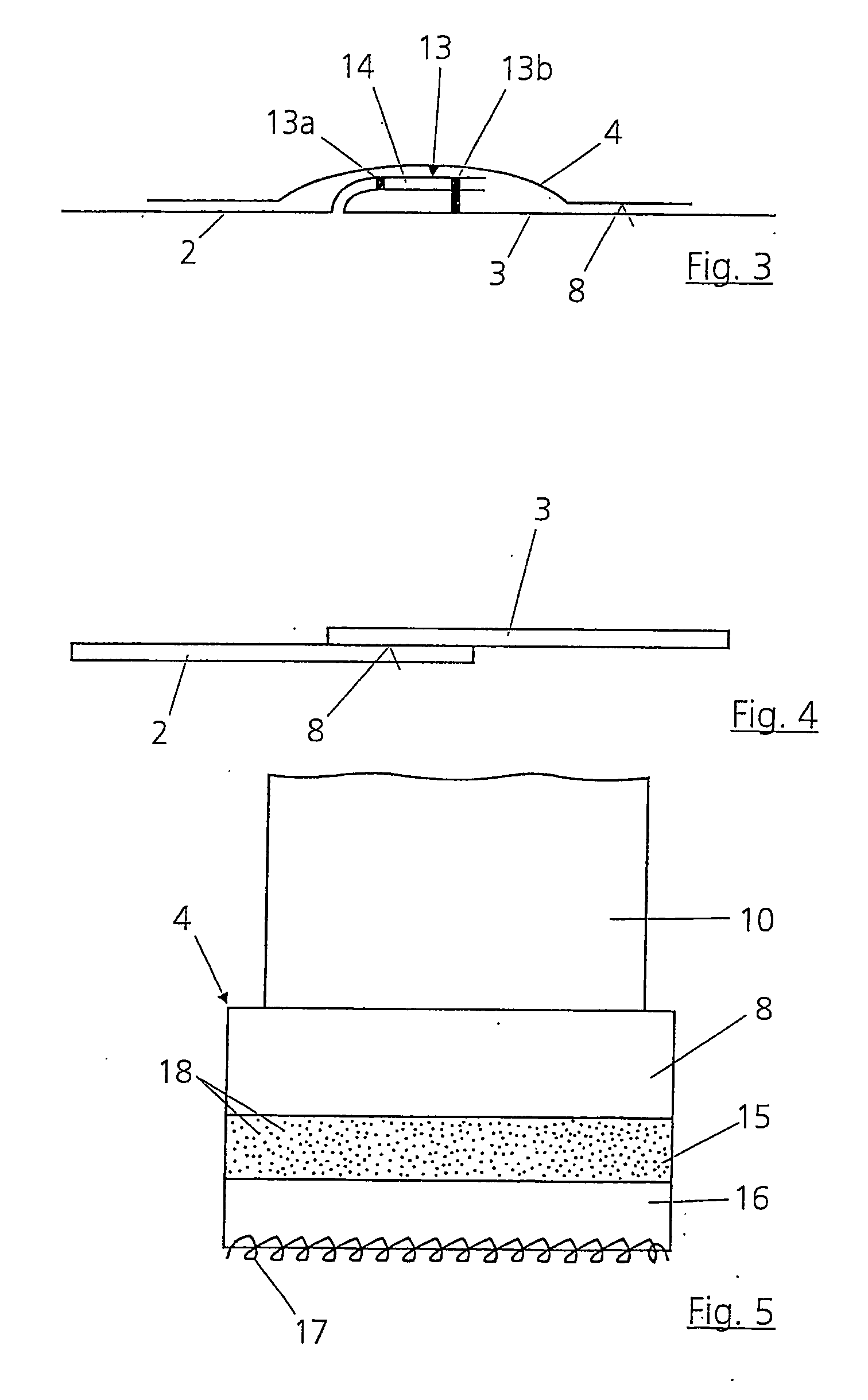Method and device for producing a fluid-tight connection of layers of material and corresponding sealing
a technology of fluid tight connection and layer, applied in the direction of weaving, garments, applications, etc., can solve the problems of not being able to penetrate deep into the material, not being able to use as a reflector, and not being able to achieve the effect of high production accuracy
- Summary
- Abstract
- Description
- Claims
- Application Information
AI Technical Summary
Benefits of technology
Problems solved by technology
Method used
Image
Examples
Embodiment Construction
[0038]FIG. 1 shows an apparatus 1 for sealing a seam (which cannot be seen here), which connects two layers of material 2 and 3, preferably textile fabrics, to one another. Provided for the sealing is a sealing strip 4, the structure of which is described in more detail later with reference to FIG. 5. The connection of the layers of material 2 and 3 produced with the sealing strip 4 by means of the apparatus 1 and the method described below is represented in more detail in FIG. 3.
[0039] The apparatus 1 has two rollers 5 and 6, which are both set in rotation by means of respective drive devices (not represented), for example an electric motor. The first roller 5, rotating counterclockwise, is provided for transporting the sewn-together layers of material 2 and 3, whereas the second roller 6, rotating clockwise, transports the sealing strip 4. Between the two rollers 5 and 6 there is a roller nip 7, in which the sealing strip 4 is pressed with the layers of material 2 and 3 in such a...
PUM
| Property | Measurement | Unit |
|---|---|---|
| Transparency | aaaaa | aaaaa |
| Energy | aaaaa | aaaaa |
| Light | aaaaa | aaaaa |
Abstract
Description
Claims
Application Information
 Login to View More
Login to View More - R&D
- Intellectual Property
- Life Sciences
- Materials
- Tech Scout
- Unparalleled Data Quality
- Higher Quality Content
- 60% Fewer Hallucinations
Browse by: Latest US Patents, China's latest patents, Technical Efficacy Thesaurus, Application Domain, Technology Topic, Popular Technical Reports.
© 2025 PatSnap. All rights reserved.Legal|Privacy policy|Modern Slavery Act Transparency Statement|Sitemap|About US| Contact US: help@patsnap.com



